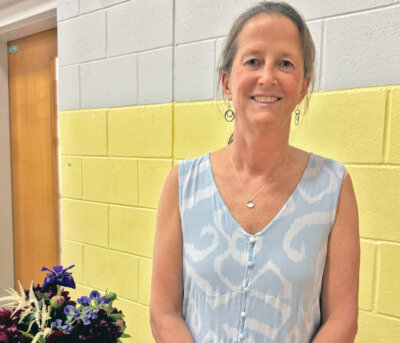Choosing high school classes with an eye toward college
As high school students start to choose next fall’s classes, the upperclassmen will soon be referred to as rising juniors or seniors. That new title makes college appear closer to reality. With so many courses to consider, how can a student evaluate the various paths to be prepared for college? The classes with the letters AP (Advanced Placement) in front of the name are designed with the goal of tackling college-level material while in high school. In addition, the Vermont Agency of Education encourages dual-enrollment courses at specific Vermont colleges for students to take challenging classes that may not be offered at their high school.
Beginning with AP courses, there are two components to consider. First, the student will do rigorous homework and take tests toward earning a grade in the class. Also, at the start of May, the AP exams are standardized tests that are administered with scores reported in July. The AP exam is scored from one to five, with the optimal score of five. This is in addition to a student’s grade in the actual course. In some cases, the classroom grade could differ from the standardized test score. With all the preparation of taking an AP course and the pressure of an exam, is it worth it? Since all colleges have different admissions criteria and student profiles, there is not a one-size-fits-all answer. The goal for an AP course is to provide some standardization of college-level material for the student to be prepared for college.
Not all colleges consider AP courses as equivalent to an actual college class. For example, three local colleges do not evaluate AP credits equally. Dartmouth College does not count AP courses toward credits required for graduation. The University of Vermont does grant credit toward graduation in some subjects depending on the scores. Middlebury College does not allow AP credits to bypass taking requirements for specific majors or minors. Thus, students will need to review each college’s handbook from the Registrar’s office as to whether and how AP courses can be used.
Another college-ready option is the Vermont Dual-Enrollment Program through the Agency of Education. This allows most Vermont students to take up to two college courses from various participating Vermont colleges that can be taken on-campus, online, or at the participating high school. Many high schools list dual-enrollment courses on the student’s transcript. Also, the student will have an actual college transcript with their grade and credits. When applying to colleges, a student can submit their dual-enrollment transcript as proof of their college-level performance. Since not all colleges accept credits from other colleges, it is important to check with each college’s Registrar’s office as to their policies of accepting college credits.
AP courses and Dual-Enrollment classes can seem like a daunting task, but they can expose the student to future academic interests. For example, if a student is interested in how climate change impacts migration, taking AP Human Geography is an eye-opening course. Colleges refer to this as interdisciplinary education as to how various academic subjects like science and economics are interconnected. In taking college dual-enrollment classes, the student can request a teacher reference to highlight their work ethic and academic capabilities beyond the typical high school learning dynamic.
College applications usually ask the student to list their intended major. The colleges review the student’s transcripts to see the academic fit. For example, if a student plans to apply to the Business School, taking AP Macroeconomics (EC-011 at UVM dual-enrollment) and AP Microeconomics (EC-012 at UVM dual-enrollment) will give the student a running-start with these typical distribution requirements. Even if a student does not receive future college credit, the knowledge learned is a solid foundation to build upon. Adjusting to college is a big change with independent living and learning, where having academic familiarity freshman year can help to build confidence and performance.
Planning your high school courses is an ongoing discussion in weighing various alternatives. High school AP classes are expanding and college dual-enrollment courses are becoming more common. The college admissions process evaluates this coursework as another measurement beyond typical SAT and ACT test scores, especially since many colleges are remaining test-optional. Although it may be difficult to do something new for the first time, the lessons we learn can help pave the way for success in college and beyond.
Margo Bartsch founded College Essay Coach, a full-service college admission business, and has been an adjunct professor in business at Champlain College and at Middlebury College.
Related Stories
Popular Stories
If you enjoy The Charlotte News, please consider making a donation. Your gift will help us produce more stories like this. The majority of our budget comes from charitable contributions. Your gift helps sustain The Charlotte News, keeping it a free service for everyone in town. Thank you.
Andrew Zehner, Board Chair









